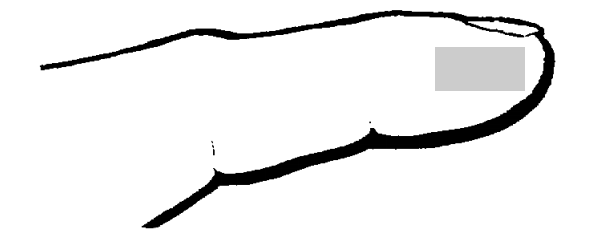Blood glucose checking
What is blood glucose checking?
To measure the amount of glucose (sugar) in the blood, a drop of blood is taken from a finger, then checked.
Why does my child need blood glucose checking?
These check results help you and your health care provider assess your child's condition and adjust medicines.
How should I prepare my child?
Explain briefly what you are about to do. Be truthful about the discomfort and be positive about the benefits of the check. Once you have explained, be ready to start right away. A delay may increase your child's anxiety, which can make the blood vessels tighten and the glucose level rise. Using relaxation techniques or distraction during the finger poke may improve blood flow. Independence should be encouraged, but not pushed before the child is ready. Praising your child may make future checking easier. Never use blood glucose checking as a threat.
How do I get a good drop of blood?
Prepare well and use good technique.
- Wash your hands with soap for at least 15 seconds, rubbing all surfaces briskly, or use an alcohol hand sanitizer.
- Gather supplies:
• blood glucose meter
• finger-lancing device ("finger poker")
• lancets
• blood glucose checking strips
• cotton balls - Wash your child's hands with soap and warm water and dry well. (For infants and toddlers, toes can be used as well as fingers.) Alcohol dries the skin and should not be used to clean unless soap and water are not available. If alcohol is used, let it dry well before poking.
- People with very poor circulation may try soaking the hand in warm water for 3 to 5 minutes. Holding the arm below heart level will increase blood supply.
- Carefully prepare the finger poker following the manufacturer's directions.
- Poke either side of the fingertip (or toe), not the center or end. Poke in the area between the tip and halfway to the first joint (no closer to the knuckle than the halfway point).

- If the blood does not flow freely, wait a few seconds after the poke to let the blood vessels relax. The blood should then begin to flow.
- "Milk" the finger gently from the base towards the tip. Do not squeeze only at the fingertip.
- Keep the puncture site of the finger down, so the drop of blood hangs from the finger.
How do I test the blood?
Follow the instructions for blood glucose checking given by the educator or refer to the instruction manual that comes with the glucose meter.
After getting the blood sample, stop any bleeding by pressing with a cotton ball.
Be sure to record all blood glucose results.
How often should I check the blood?
- at times directed by the health care team
- when your child is sick
- if you notice unusual behavior changes
- if you think your child's blood sugar level is too high or too low
When should I call the clinic?
- if you have any concerns about the blood glucose levels
- if blood glucose levels are out of the recommended range for your child
What else do I need to know?
Some medicines can change the blood glucose level. Check with the doctor or pharmacist.
Put lancets in a puncture-proof container such as a sharps container, plastic detergent bottle, or coffee can. If your home care service does not collect full sharps containers from you, ask your waste collection company how to dispose of them.
Keep your glucose meter clean. Follow the manufacturer's instructions about care of the meter and supplies.
Questions?
This is not specific to your child but provides general information. If you have any questions about your child's condition, please call your clinic.
This page is not specific to your child, but provides general information on the topic above. If you have any questions, please call your clinic. For more reading material about this and other health topics, please call or visit Children's Minnesota Family Resource Center library, or visit www.childrensmn.org/educationmaterials.
© 2024 Children's Minnesota
